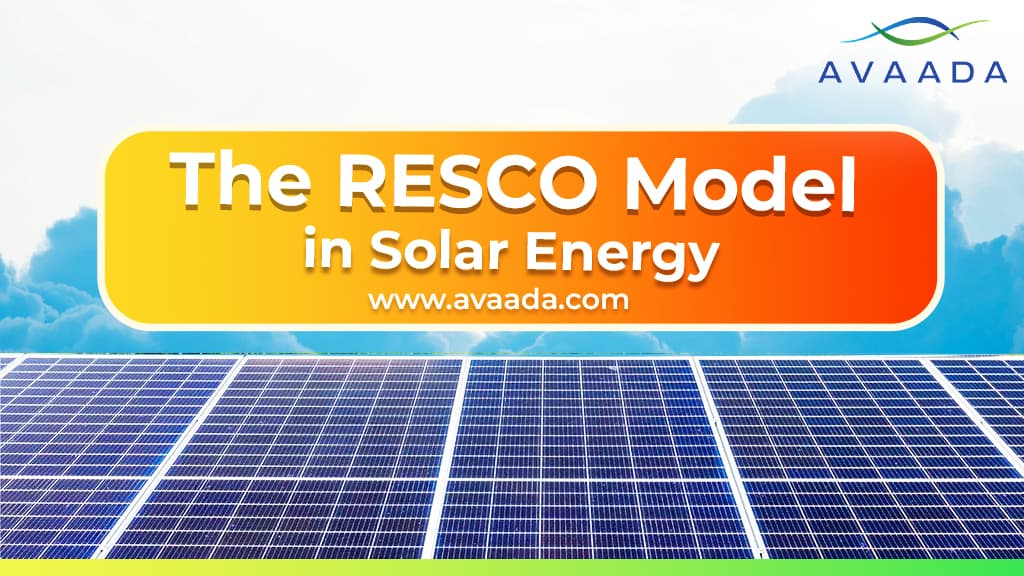The RESCO model is gaining traction fast and is now a game-changer for renewable energy solutions, particularly in the solar energy sector.
This world is shifting its reliance on fossil fuels to renewable sources of energy. Among this shift, solar energy has become one of the most efficient and sustainable alternatives. Countries and organizations across the world are increasingly resorting to solar solutions to make their carbon footprint smaller, obtain efficiency in the consumption of energy, and reduce the cost of electricity.
This shift was followed by the emergence of the RESCO model (Renewable Energy Service Company model), which is again ideal for organizations and consumers who have a desire to use solar energy without high initial investments.
What is the RESCO model in solar energy?
The RESCO model is a business model by which a third-party company, known as a Renewable Energy Service Company (RESCO), installs, operates, and maintains a solar energy system on a client’s property.
The client purchases power produced from it at an agreed rate over an agreed period but does not own the solar system. It usually takes the form of a Power Purchase Agreement or lease.
This model has been critical in affording solar energy since it transfers the burden of financing, installation, and maintenance from the end user to the service provider. The elimination of this stringent feature of the high cost of investment by the model makes it possible for a wide spread of users ranging from businesses to governments, to residential individuals to afford clean renewable solar power.
RESCO Model: Key Features
Zero Upfront Costs
One of the major reasons the RESCO model has gained so much popularity is that it doesn’t cost a fortune to invest in initially. The whole installation’s financial burden is on the RESCO company, and the customers do not have to pay for the whole installation upfront, unlike the traditional solar system ownership when the customers pay the entire installation cost. This is a perfect fit for companies that would like to adopt solar energy but cannot make significant investments in capital.
Learn how using copper instead of silver could significantly reduce the cost of solar cells.
Long-Term PPAs
The RESCO model also sells solar energy through a Power Purchase Agreement (PPA). This is a long-term contract undertaken with the customer by the RESCO organization for 10 to 25 years.
The customer’s obligation in this scenario lies in buying electricity from the solar system at either fixed or variable prices. This allows a customer to have a predictable cost of energy while rendering a steady inflow of income for the RESCO organization.
Operational Accountability on RESCO
The organization that installs, operates, and maintains solar energy systems is RESCO. The surroundings for system operation readily generate problems solved and associated with the operation or outage.
Responsible users have no issue with the easy utilization of solar power without any problems associated with its performance or during outages.
Risk Mitigation
With the RESCO model, there’s protection of the risks of system performance and operational efficiency to the customer. In case the system performs poorly or there is a technical malfunction, the risk sits with the RESCO company.
This thus provides some form of cushioning of financial risks in relation to the consumer such that the adoption of solar energy is less risky and reliable.
Benefits of the RESCO Model for Solar Energy
Less Expensive
Installation of a solar energy system costs a lot, and most businesses and residential consumers cannot afford to install it. The RESCO model removes the financial constraint from the customers’ bar to go solar thus making solar energy cheaper and thus accessible to many.
The consumers only have to pay for the energy consumed, and they do not need to prepay or pay for the maintenance of the system.
Energy Savings
Solar energy tends to be less expensive compared to the conventional supply of electricity in the long run, so it is very possible that customers can substantially save energy bills by switching to the RESCO model.
The PPA model gives customers a fixed competitive rate for years, moving them and their families away from volatile energy prices and saving them a lot throughout the whole duration of the contract.
Sustainability and Environmental Benefits
The merit of solar energy lies in the fact that it is a non-pollutant and renewable source of power generation, which helps to reduce the dependence on fossil fuel sources and carbon emissions.
Curious about the concept of net-zero emissions? Find out what it really means in our blog
There is no doubt that using the RESCO model of adopting solar energy, companies and the customers at large can do their share in beautifying the green landscape in pursuance of achieving the goal of sustainable power generation. This perfectly aligns with any corporate social responsibility initiatives and can even concurrently increase brand image for companies.
Scalability
The RESCO model also has the advantage of high scalability. Be it an industrial complex of hundreds of megawatts or just a small-sized residential property, the model can be shaped according to any size and energy requirements.
Based on the growth in the requirement for energy, the solar system can also be expanded without much disturbance from the previous normal functioning, thus allowing for a completely hassle-free shift to a higher capacity system.
Challenges of the RESCO Model
Though it is a RESCO model, a state-of-the-art beneficial scheme for solar energy adoption, it still poses some challenges.
The long-term PPA nature may not appeal to customers with a degree of understanding of short-term flexibility. This system’s performance would depend on a proper, reliable, and experienced RESCO company that will satisfy the client.
Conclusion
Indeed, it is revolutionary for solar energy to have in it the RESCO model, which once made solar energy approachable and accessible to businesses and people. When up-front investment is avoided and the operation responsibility is shifted to the service provider, there are more chances to utilize solar energy to reduce energy costs in the long run and diminish one’s carbon footprint.
Given the escalating demand for renewable energy, the RESCO model is positioned to gain prominence with its role in the expected transfer of global energy to solar energy, which in itself would offer a win-win deal for consumers and the environment.








